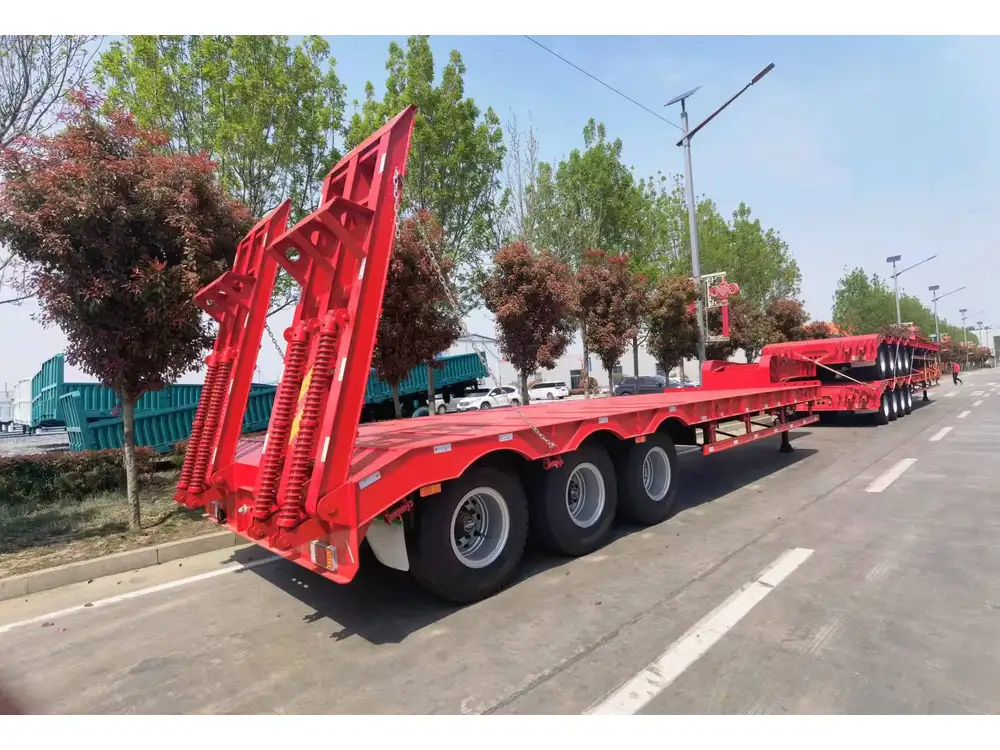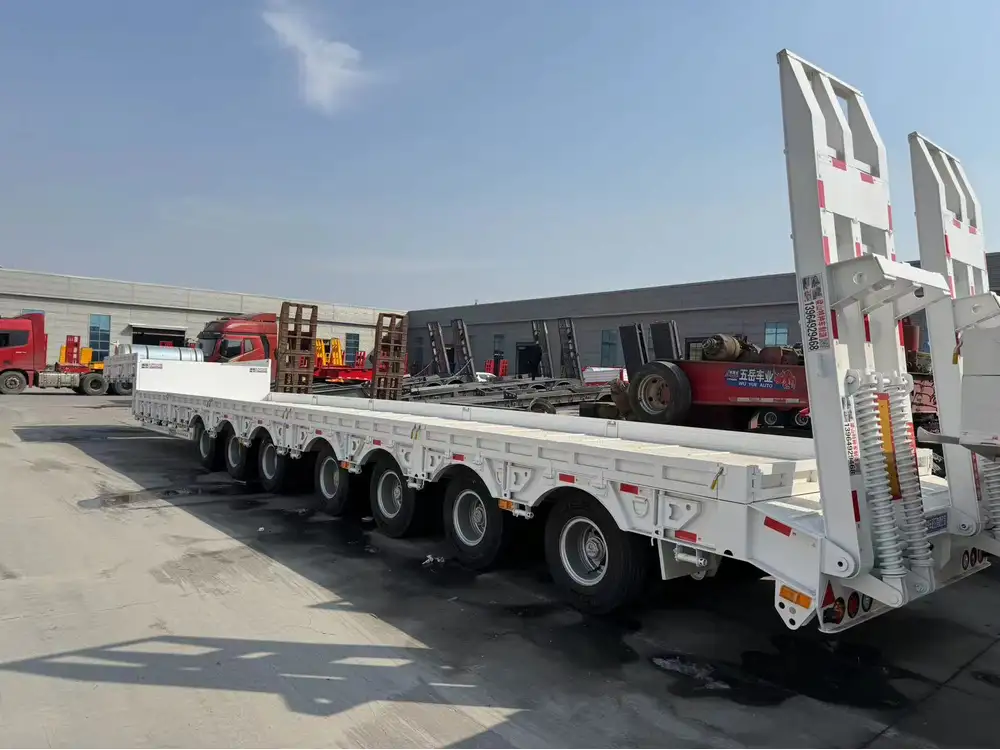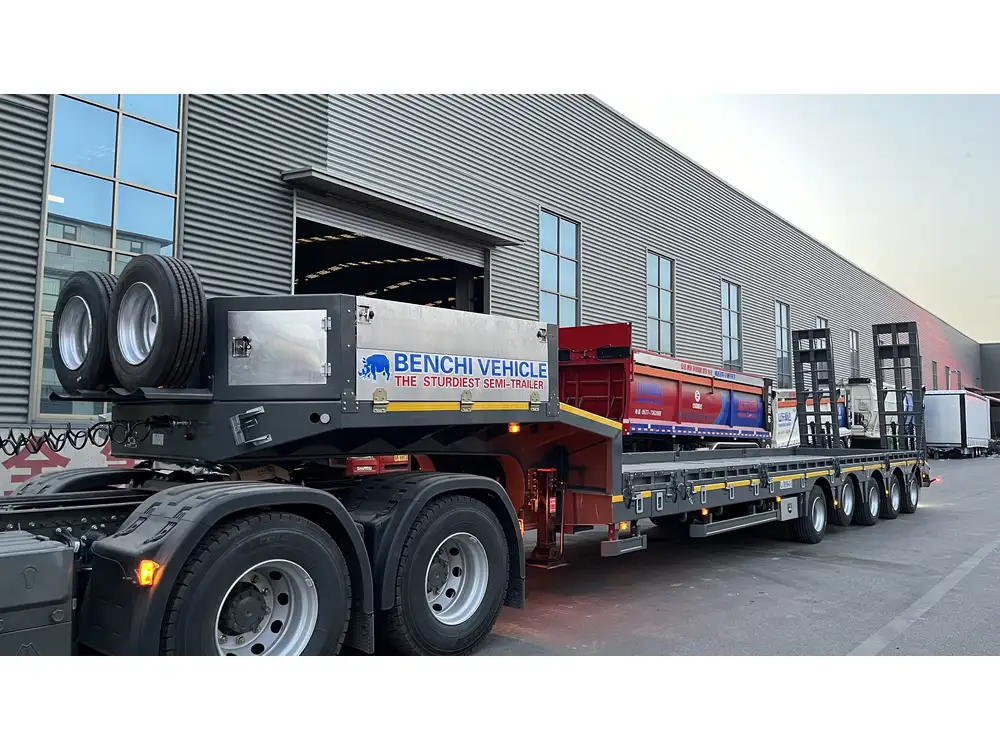Introduction to Semi-Trailer Regulations
Navigating the world of semi-trailer transporting involves more than just selecting the right vehicle; it requires an intricate understanding of the legal frameworks governing them. Each state or country may have its own regulations surrounding semi-trailer dimensions, configurations, and the necessary distances they must maintain on the road. In this article, we will delve deep into the specific legal distance requirements between semi-trailers. This will not only provide clarity on compliance but also enhance your operational efficiency and safety on the highways.
What Is a Semi-Trailer?
A semi-trailer is a trailer designed to be towed by a tractor. Unlike standard trailers, a semi-trailer doesn’t have a front axle; instead, it relies on the tractor to bear a significant portion of its weight. This unique design allows for quicker loading and unloading, making it a popular choice for transporting large and heavy goods. Understanding these nuances is crucial as they directly influence regulatory stipulations, including spacing and distances.

Types of Semi-Trailers
| Type | Description | Common Use Cases |
|---|---|---|
| Flatbed | Open trailers without sides, ideal for loads that can be secured with straps. | Construction materials, machinery. |
| Refrigerated | Semi-trailers equipped with temperature-controlled compartments for perishable goods. | Food transport, pharmaceuticals. |
| Tanker | Designed for the transportation of liquids, such as fuel, chemicals, or food-grade liquids. | Oil, chemical, food industries. |
| Dry Van | Enclosed trailers that provide protection from weather during transport. | General freight, retail goods. |
Legal Distance Regulations
Interstate Versus Intrastate Regulations
The legal requirements regarding the distance between semi-trailers can vary significantly based on whether the transport is interstate (across state lines) or intrastate (within a single state). As a manufacturer, awareness of these distinctions is paramount to ensure full compliance.

Interstate Regulations
The Federal Motor Carrier Safety Administration (FMCSA) regulates the minimum distance between semi-trailers under various operational conditions. The FMCSA’s guidelines generally stipulate:
Safe Distance: Utilize a minimum following distance of at least one car length for every 10 mph you are traveling. For example, if you are driving at 60 mph, maintain at least six car lengths behind the vehicle in front of you.
Braking Distance: When towing, additional stopping distances must also be factored in due to the weight of the load.
Intrastate Regulations
Each state may implement more stringent regulations over interstate measures. Consequently, operators should reference the specific Department of Transportation (DOT) or transportation authority guidelines relevant to their jurisdiction. For instance, states like California may require a minimum distance of 300 feet between semi-trailers in certain freight areas.
Recommended Distances for Optimal Safety
Expanding on the intricacies of distance regulations, various experts recommend specific distances tailored to ensure maximum safety.
| Scenario | Recommended Distance |
|---|---|
| Towing a Single Trailer | Minimum of 50 feet |
| Towing Multiple Trailers | At least 100 feet for two trailers, 150+ feet for three or more trailers. |
| Highway Travel | Maintain a distance of 3-4 seconds between vehicles. |

Factors Influencing Legal Distance
Understanding the legal distance guidelines for semi-trailers is multifaceted, influenced by numerous factors. Knowing these will facilitate better practices in compliance and operational excellence.
Vehicle Size and Weight
The size and weight of your semi-trailer and cargo play a critical role in determining safe and legal spacing. Heavier and longer vehicles require more room, especially in emergency situations, where longer stopping distances are necessary.
Road Conditions
Road conditions significantly impact braking and control. In wet or icy conditions, it is advised to increase the legal distance to allow for extended stopping time and potential skidding.

Traffic Conditions
High-volume traffic areas may necessitate shorter legal distances in order to facilitate smooth traffic flow. However, it is crucial to prioritize safety even when faced with such conditions.
Potential Consequences of Not Adhering to Regulations
Failing to comply with legal distance regulations can have serious ramifications, both financially and operationally.
Fines and Penalties
Transportation authorities enforce fines for violations, which may escalate based on the severity and frequency of offenses. Consequently, repeated violations can result in hefty penalties and the risk of losing licensure as a carrier.

Insurance Liability
In the event of an accident where legal distances were not maintained, the operator may face issues with insurance coverage. Insurers may deny claims if they find that safety regulations were violated, leading to potentially devastating financial repercussions.
Impact on Safety
Most importantly, not adhering to legal distances can lead to accidents, resulting in injuries, fatalities, and damage to goods and property. This not only endangers the lives of drivers and passengers but significantly tarnishes the trucking company’s reputation.
Compliance Strategies for Semi-Trailer Operators

Best Practices for Leveraging Legal Guidelines
Ensuring compliance with legal distance requirements is integral for any semi-trailer operation. Below are strategies operators can employ to leverage legal guidelines effectively.
Conduct Regular Training
- Implement regular training for all drivers focusing on road safety, legal requirements, and equipment handling.
- Utilize simulations and real-world scenarios to enhance understanding.
Invest in Technology
- Employ advanced telematics systems to monitor driving behavior while also assessing adherence to legal guidelines.
- Consider using adaptive cruise control systems that automatically adjust speed and distance based on surrounding vehicles.

Stay Informed
The landscape of transportation regulations is fluid, with changes occurring frequently. Keep abreast of updates through:
- Membership in trucking associations or engagement with transportation advocacy groups.
- Regular consultation of state and federal transportation websites to remain current on legislative changes.
The Future of Semi-Trailer Regulations
As transportation logistics continue evolving, the legal landscape surrounding semi-trailers is likely to adjust accordingly.
Changes in Regulations
Governments may adapt regulations to reflect new technologies such as autonomous vehicles and advanced safety systems. Understanding these changes and how they impact legal distances is critical for future compliance.

Technological Advancements
The integration of AI and machine learning in trucking operations could lead to better predictive algorithms for maintaining safe distances under varying conditions. As these technologies develop, they may redefine how we approach legal compliance.
Conclusion
Understanding the legal distance between semi-trailers is essential for efficient and safe road transport. By adhering to established guidelines, semi-trailer operators not only ensure legal compliance but also enhance the safety of their operations. This comprehensive approach promotes smoother logistics, protects assets and lives, and builds a trustworthy reputation within the industry. Implementing best practices combined with a proactive approach to regulation changes will position operators for success in an ever-evolving transportation landscape. It is more than a legal obligation; it is a commitment to the safety and efficiency of the roads we navigate.



